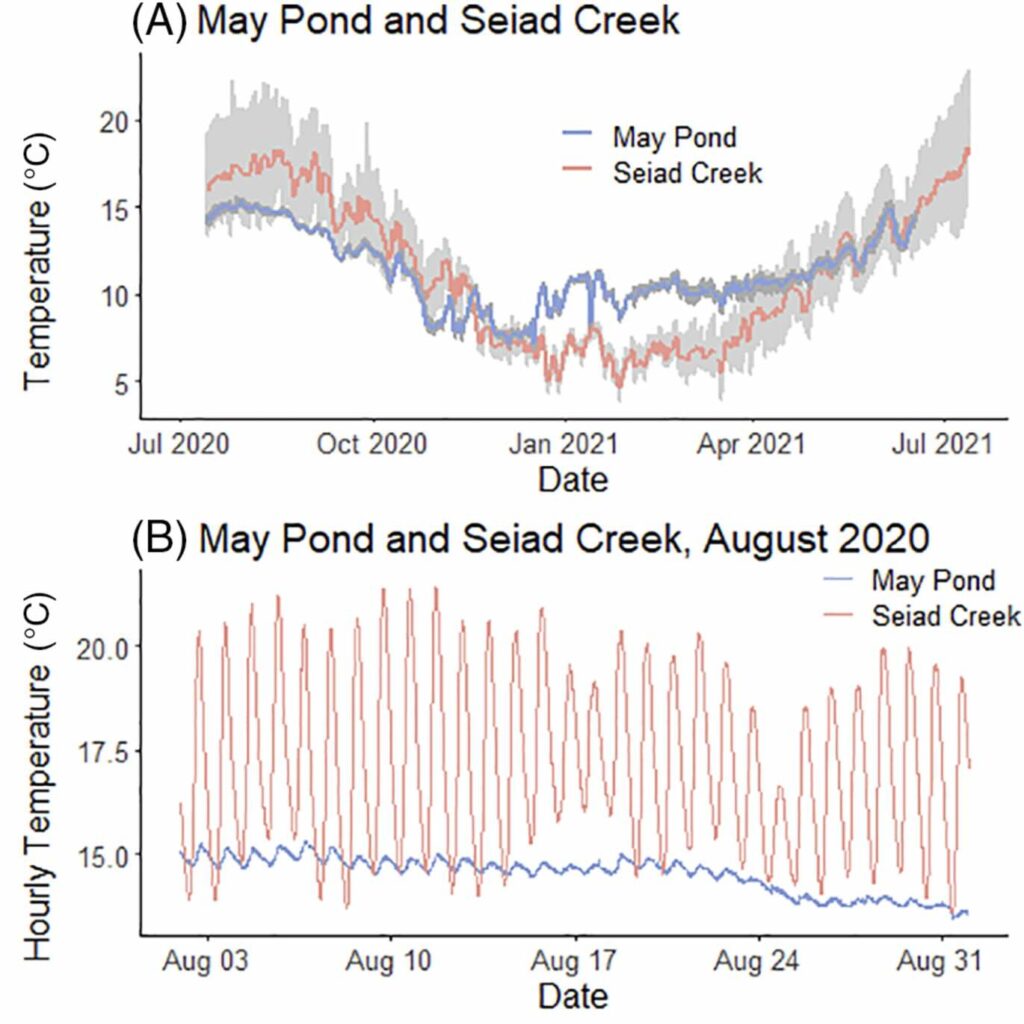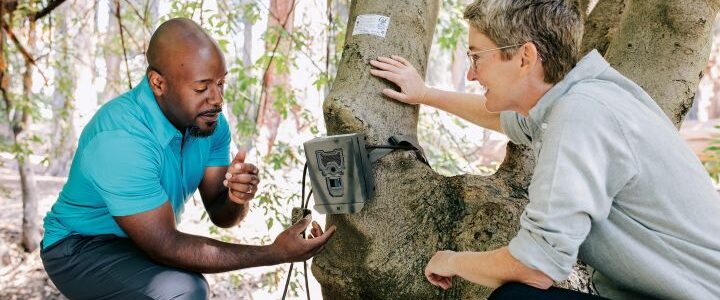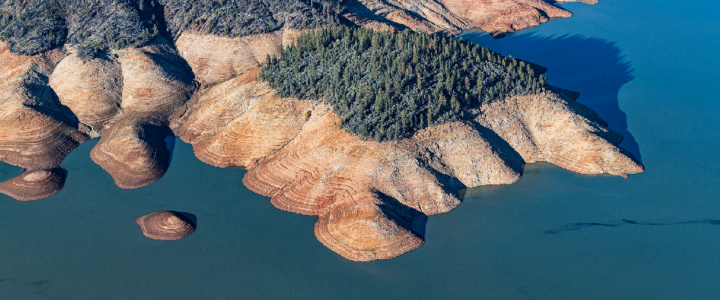The Collaboratory for Equity in Water Allocations (COEQWAL) project was launched in the fall. To learn more about the project, visit coeqwal.berkeley.edu and read this Q+A article with Maven’s Notebook journalist Janet Byron.
News
“Wild Fry: A Conversation with Dr. Stephanie Carlson” featured by the Wild Salmon Center
A conversation with Stephanie was recently featured by the Wild Salmon Center, where Stephanie currently serves on the Science Advisory Board. Through the conversation, Stephanie highlights the importance of habitat mosaics, including “stop over” sites, for supporting a diversity of salmon migratory tactics and life histories. You can find the full conversation here!
New paper in Restoration Ecology
Great job Jessie Moravek on publishing the paper ‘Restored off-channel pond habitats create thermal regime diversity and refuges within a Mediterranean-climate watershed‘ in Restoration Ecology! Check it out if you’re interested in water and air temperature modeling — you can access the paper here.

Toward a New Legacy

Rausser College faculty are shaping the next era of wildlife and conservation research.
Welcome to Dr. Hank Baker!
Dr. Hank Baker has recently joined the #BerkeleyFreshwater labs as a postdoc, advised by Stephanie and Ted. For his postdoc, Hank is part of a collabortive effort led by Mariska Obedzinski with California Sea Grant and supported by NOAA to explore movement tactics in juvenile coho salmon and the potential importance of lower Willow Creek as non-natal rearing habitat. Welcome, Hank!
COEQWAL Project Funded through UC Climate Action Grant Program
Excited to announce that our project, entitled “COEQWAL: Equitable stewardship of California’s water in a changing climate”, has been funded through the University of California’s Climate Action Grant Program. The two-year, $9M project aims to create tools, data, public education, and partnerships that will inform more open and transformative discussions about water operations and management in the Sacramento-San Joaquin River system in a changing climate. The project will also do deep dives into the multifaceted implications of water allocations scenarios for salinity management, drinking water for vulnerable communities, and Chinook salmon recovery. Stay tuned for more information!
Congratulations Dr. Brian Kastl!
This summer, Brian filed his dissertation entitled, “Ecological thresholds in a water-scarce, warming world: Informing instream flow conservation for endangered salmon.” Brian is now working as an ORISE Fellow with the US EPA, where is he contributing to the development of new temperature management policies for the conservation of salmon and steelhead in the Western US. Well done Brian!

Five UC Berkeley-led projects awarded California Climate Action Grants

The state-funded grants will advance will advance research that builds climate resilience and equity in California.
Welcome to Avi Kertesz!
We are excited to welcome Avi Kertesz into the Carlson Lab and the #BerkeleyFreshwater labs! Avi joins us from Stillwater Sciences where he worked for a number of years surveying California rivers and fishes. Avi brings a deep interest in salmon life history diversity and resilience. Welcome, Avi!
Stephanie and Albert participate in “Revisiting the Freshwater Imperative” workshop in Colorado
Albert and Stephanie participated in a workshop on “Revisiting the Freshwater Imperative” in Fort Collins in July. It was a jam packed few days, with a lot of discussion aimed at taking stock of progress made since the original Freshwater Imperative was published nearly 30 years ago and advancing an interdiscipinary freshwater science research agenda. Stay tuned for products from this effort!
